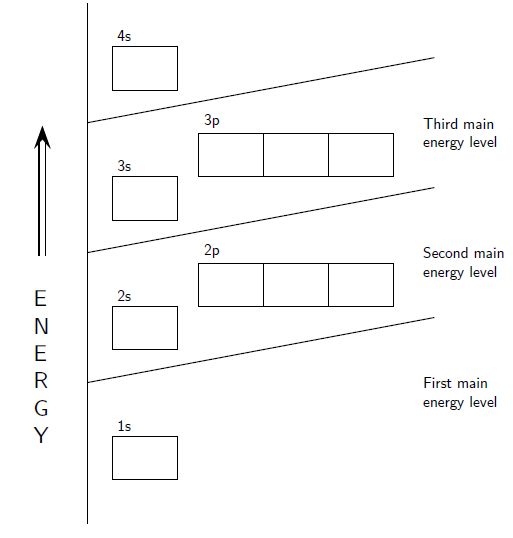| << Chapter < Page | Chapter >> Page > |
We will start with a very simple view of the arrangement or configuration of electrons around an atom. This view simply states that electrons are arranged in energy levels (or shells) around the nucleus of an atom. These energy levels are numbered 1, 2, 3, etc. Electrons that are in the first energy level (energy level 1) are closest to the nucleus and will have the lowest energy. Electrons further away from the nucleus will have a higher energy.
In the following examples, the energy levels are shown as concentric circles around the central nucleus. The important thing to know for these diagrams is that the first energy level can hold 2 electrons, the second energy level can hold 8 electrons and the third energy level can hold 8 electrons.



But the situation is slightly more complicated than this. Within each energy level, the electrons move in orbitals . An orbital defines the spaces or regions where electrons move.
An atomic orbital is the region in which an electron may be found around a single atom.
There are different orbital shapes, but we will be mainly dealing with only two. These are the 's' and 'p' orbitals (there are also 'd' and 'f' orbitals). The 's' orbitals are spherical and the 'p' orbitals are dumbbell shaped.

The first energy level contains only one 's' orbital, the second energy level contains one 's' orbital and three 'p' orbitals and the third energy level contains one 's' orbital and three 'p' orbitals (as well as 5 'd' orbitals). Within each energy level, the 's' orbital is at a lower energy than the 'p' orbitals. This arrangement is shown in [link] .

This diagram also helps us when we are working out the electron configuration of an element. The electron configuration of an element is the arrangement of the electrons in the shells and subshells. There are a few guidelines for working out the electron configuration. These are:

Notification Switch
Would you like to follow the 'Chemistry grade 10 [caps]' conversation and receive update notifications?